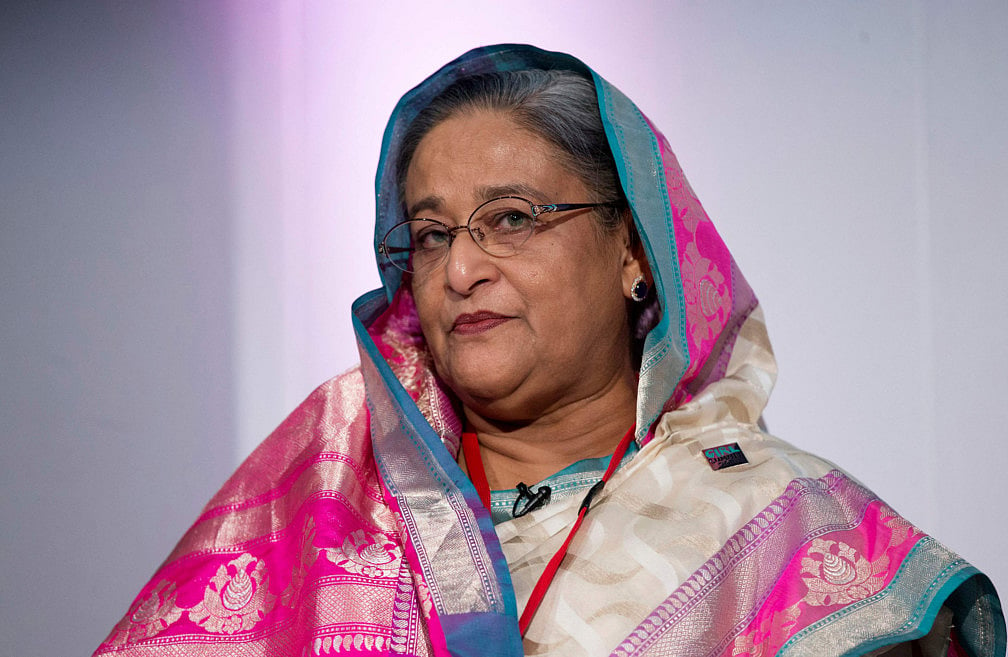How did Bangladesh reach this point? The Sheikh Hasina story — and what comes next
From student protests to exile and trial in absentia — tracing crisis and uncertain road

Dubai: For more than a decade, Sheikh Hasina ruled Bangladesh with a firm hand, presiding over rapid economic growth, major infrastructure projects and global recognition.
But beneath that progress was a rising tide of resentment — especially among young, educated Bangladeshis who believed the system was stacked against them.
The spark came from something that had existed since 1971: A government job quota system reserving 30% of civil-service jobs for war veterans and their descendants.
What was once viewed as a tribute to the nation’s heroes slowly came to be seen by many students as an inheritance-based privilege that shut out thousands of qualified applicants.
By 2024, Bangladesh’s unemployment was painfully high, and many believed the quota system had evolved into a political loyalty reward, benefitting those linked to Hasina’s ruling Awami League.
Frustration, already simmering on campuses, boiled over into nationwide protests — led by students who demanded a fair, merit-based future.
The question at the centre of South Asia’s diplomatic chessboard is simple but explosive:
What happens next?
Will India extradite Sheikh Hasina?
India has not indicated any willingness to hand her over.
History, emotion and geopolitics are deeply interwoven:
India sheltered her after her family was killed in 1975.
She maintained one of the closest pro-India foreign policies of any Bangladeshi leader.
Dhaka’s domestic politics remain sharply divided — her return could reignite unrest, while her extradition could trigger backlash among her loyalists.
At this moment, no clear path exists.
The possibilities range from long-term exile, to legal appeals, to regional negotiation, to a political compromise — something Bangladesh has rarely seen.
How Bangladesh reached the Sheikh Hasina crisis: A timeline
1971–1975: Origin of legacy & tragedy
1971 — Bangladesh gains independence; War veterans become national heroes and are promised lifelong state support.
1975 — Sheikh Mujibur Rahman (Bangladesh’s founding leader) and most of his family are assassinated in a military coup.
Hasina and her sister survive because they are abroad and later seek refuge in India.
1975–1981: India gives shelter
Hasina lives in Delhi under assumed identities, protected by the Indian government.
Builds early political relationships that later shape her foreign policy.
1996–2024: Rise, power & controversy
Hasina becomes Prime Minister (multiple terms), entering Bangladesh’s most stable yet most politically polarised era.
Major infrastructure growth, rising global profile — but critics allege centralised power, shrinking dissent, and growing patronage networks.
The job quota problem (Root of the storm)
30% of all government jobs reserved for war veterans and their descendants — a policy seen as national honour at first.
Over decades, it evolves into a hereditary privilege system, accused of benefitting politically aligned families.
By early 2024, unemployment is high and graduates see the system as elite protection, not patriotism.
July–August 2024: Student-led protests erupt
Protests spread from campuses to the streets.
Clashes turn deadly; Allegations emerge of excessive force and state-sanctioned crackdowns.
Anger transforms into anti-Hasina mobilisation.
August 5, 2024: Hasina leaves Bangladesh
She boards a military aircraft and lands at Hindon Airbase, India, evoking her 1970s exile.
An interim government steps in.
Job quota is reduced from 30% to 5%.
Late 2024–2025: Legal fallout
Hasina is charged in absentia with serious crimes, including murder and torture linked to the crackdown.
Prosecutors seek death penalty if convicted.
Her party, the Awami League, faces bans and restrictions.
What happens now?
Will India extradite her?
Not clear.
India has historic loyalty, strategic interest, and legal caution.
Any decision could:
inflame Bangladeshi politics
strain India–Bangladesh relations
set a regional precedent
Could she return voluntarily?
Possible only if:
she believes the trial will be fair
a political compromise emerges
international mediation steps in
Could she remain abroad long-term?
Very likely, especially if
India offers silent protection
she retains international sympathy
Bangladesh fears unrest upon her return
The government’s response was viewed by critics as aggressive and uncompromising. When clashes between protesters and security forces turned deadly, anger transformed into a full-scale anti-Hasina uprising.
Amid the growing unrest, an interim government took control, first slashing the quota from 30% to 5%, then moving to stabilise the wounded economy.
Meanwhile, on August 5, 2024, Hasina quietly left Bangladesh aboard a military aircraft that landed at Hindon Airbase in India, echoing her first exile nearly 50 years earlier, when she and her sister fled to India after her father — Bangabandhu Sheikh Mujibur Rahman — was assassinated in 1975.
The legal storm
After her departure, the interim authorities opened cases against her.
Hasina was tried in absentia, accused of ordering and enabling lethal force against protesters. The charges include murder, attempted murder, torture and abuse of power.
Prosecutors have even demanded a death sentence if she is found guilty, while her defence argues that police responded to violent mobs, not peaceful demonstrators.
Other senior officials, including a former interior minister and police chief, are being tried alongside her.
Sign up for the Daily Briefing
Get the latest news and updates straight to your inbox
Network Links
GN StoreDownload our app
© Al Nisr Publishing LLC 2025. All rights reserved.
